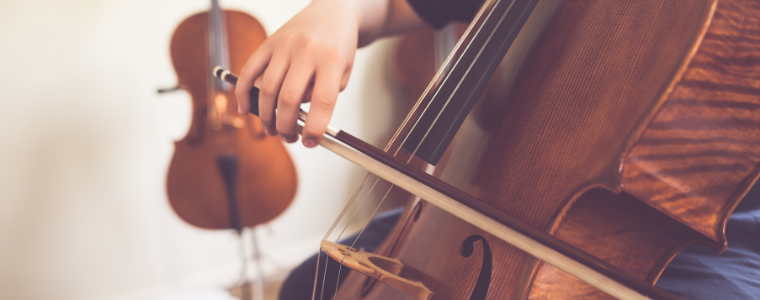How Sheltering-in-Place Can Improve Your Musicianship

You’d think the absence of regular music classes and private lessons would constrain developing your musicianship. Instead, many string musicians are finding that sheltering-in-place is helping them progress in unexpected ways.
There’s never been a better time to hone your art
With sheltering-in-place and the shutdown of favorite public hangouts and live venue events, much of the world has found itself with more time on their hands than humans have ever had in modern history. If you’re an aspiring or advanced string musician, this means plenty of extra time to hone your art.
Here are our tips on how to make the most of this window of sheltering-in-place to improve your musicianship.
Take free lessons from masters
If you don’t already subscribe to StringOvation, we recommend doing so now. We post “Short Story” Lessons from internationally renowned Jacobs School of Music at Indiana University professor, Mimi Zweig, The Petite Giant of Strings. From a variety of bow strokes and lessons on harmonics to three-note chords and violin care tips, Mimi continually provides free video instruction. Her website StringPedagogy, offers free access (thanks to Connolly Music and Thomastik-Infeld) to hundreds of video and written lessons for violinists.
Some of the most recent videos on StringOvation include Mimi’s The Short Story On...
These micro-mastery classes are less than 10 minutes long, making them easy to incorporate into your regular practice schedule.
We also recommend visiting a new website, inspired and engineered in response to COVID-19 and sheltering-in-place. It’s called StringMasters.com, and was established by professional jazz violinist, Jeremy Cohen. As an instructor, Cohen was infuriated by the failings of other online video websites, which spurred him to create StringMasters. While it isn’t free, the lessons are very affordable.
You can connect with one of StringMasters’ teachers or get your instructor to join the StringMasters site. You also have access to sheet music, progress tracking tools, and video tutorials. You can even arrange a mentoring session with an internationally known musician if you wish.
Develop your public performance techniques
Delivery confident, polished performances take hours upon hours of practice for every musician. Most emerging string musicians reduce their stage fright over time thanks to constant practicing in the classroom, performing during seasonal concerts, and whenever they earn a solo or spotlight performance opportunity.
Those chances to perform face-to-face in front of “real” people are still months away at this time, yet it’s important you find ways to exercise your performance muscles. Visit our post, How to Develop Your Courage to Perform in Public, for tips on how to do so from home.
Book extra practice time with yourself
There is definitely such a thing as too much practice! Among other things, too much practice could lead to overuse injuries. If you practice an hour or so per day, consider adding an extra 15 minutes to your schedule. For example, if you usually practice in the morning, from 10 to 11, consider adding 15 minutes or so later in the afternoon, and dedicate those minutes solely to working on a weak spot in your repertoire.
This could be your opportunity to work in front of a mirror to correct a poor posture or ergonomic issue. You might use the time to work on your improvisational skills. Or, you could master new bowing or the other violin techniques we mentioned above (see “Take Free Lessons From Masters”).
Develop your own sound
When you begin learning an instrument, it’s essential to master the tried-and-true fundamentals, which means everyone sounds the same at the start. Once you’ve progressed to the intermediate level and beyond, it’s time to develop your own sound.
It’s absolutely amazing to hear how different musicians bring their own voice to a piece of music, even though they are applying the same tempo, notes, and rhythmic patterns. This is why music lovers can instantly identify whether a recording of Bach’s Cello Suites is performed by Pablo Casals, Yo-Yo Ma, or Steven Isserlis. Just as each instrument sounds a bit different, each musician develops their own sound over time if they’re open to listening to their inner voice and resist the urge to “sound like” someone else.
Visit our posts, 4 Tips for Interpreting Music Your Own Way and How to Create Your Unique Performance Style, to begin exploring the space where your passionate heart and soul meets the black-and-white of notes on sheet music.
Let this era of sheltering-in-place and spending more time at home, be one that helps you spread your wings, deepening your musicianship day-by-day and note-by-note.

